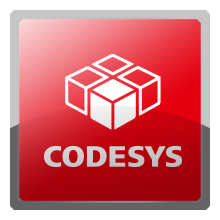DNP3 was designed to optimize the transmission of data acquisition information and control commands from one computer to another using serial and IP communications. It is not a general-purpose protocol like those found on the Internet for transmitting email, hypertext documents, SQL queries, multimedia and huge files. It is intended for SCADA (Supervisory Control and Data Acquisition) applications.
DNP3 has been used primarily by electric and water / wastewater industry, transportation and the oil and gas industry, but it functions well for other areas. It offers flexibility and functionality that goes far beyond conventional communications protocols. Among its robust and flexible features DNP3 includes:
- Output options
- Secure configuration / file transfers
- Addressing for over 65,000 devices on a single link
- Time synchronization and time-stamped events
- Broadcast messages
- Data link and application layer confirmation
- Supports any physical communication network including RS 232/485 and TCP/IP
- The DNP3 Protocol Specification is based on an Object Model
DNP3 USE CASE
A typical utility or electric power application has operations centers that monitor the equipment at each of its substations.
Substations have many devices that need to be monitored, such as switches, current sensors, and voltage transducers. That's just the tip of the Iceberg: a utility Is Interested in monitoring many more parameters from many more device types.
DNP3 is a widely used protocol that defines common rules for communication between substation and control center computers.
The CODESYS DNP3 SL runtime extension and the IEC 61131-3 library allow integrating CODESYS control applications as substations directly with the operations center through the DNP3 protocol. CODESYS applications can control and monitor underlying devices like switches or breakers, perform local control operations, show HMI displays, and report their data to higher-level SCADA systems.
CODESYS Control for Linux can run on any industrial PC as well as on servers in virtualized environments, making it universal to deploy. CODESYS can also bridge between various fieldbus protocols, or interface with almost any external software application running on the same platform, for example, to integrate data loggers, data analyzers, AI functions and many more.
A CODESYS extension for IEC 60870-5-104 server is available in the CODESYS North America store in addition to or as an alternative to DNP3.
What do the computers talk about?
Outstation computers gather data for transmission to the master
• Binary input data that is useful to monitor two-state devices. For example a circuit breaker is closed or tripped; a pipeline pressure alarm shows normal or excessive.
• Analog input data that conveys voltages, currents, power, reservoir water levels and temperatures.
• Count input data that reports energy in kilowatt hours or fluid volume.
• Files that contain configuration data.
The master station issues control commands that take the form of
• Close or trip a circuit breaker, start or stop a motor, and open or close a valve.
• Analog output values to set a regulated pressure or a desired voltage level.
Other things the computers talk to each other about are synchronizing the time and date, sending historical or logged data, waveform data, and on and on.
Why DNP3?
DNP3 was designed to optimize the transmission of data acquisition information and control commands from one computer to another. It is not a general purpose protocol like those found on the Internet for transmitting email, hypertext documents, SQL
queries, multimedia and huge files. It is intended for SCADA (Supervisory Control and Data Acquisition) applications.
Find the product in the North America web store.









